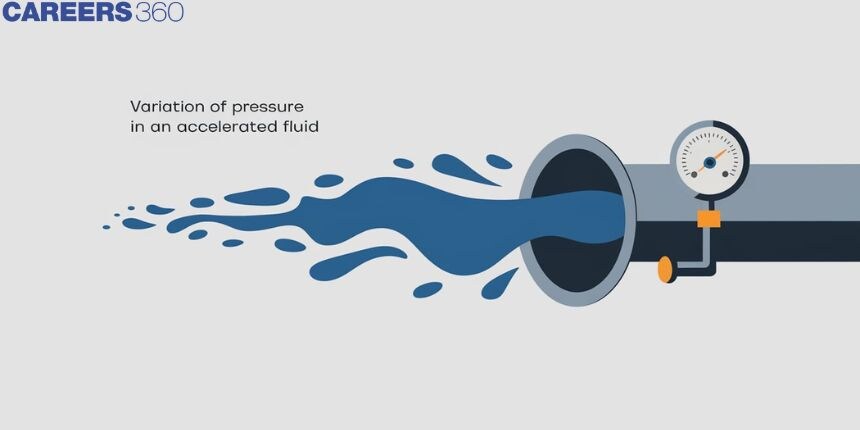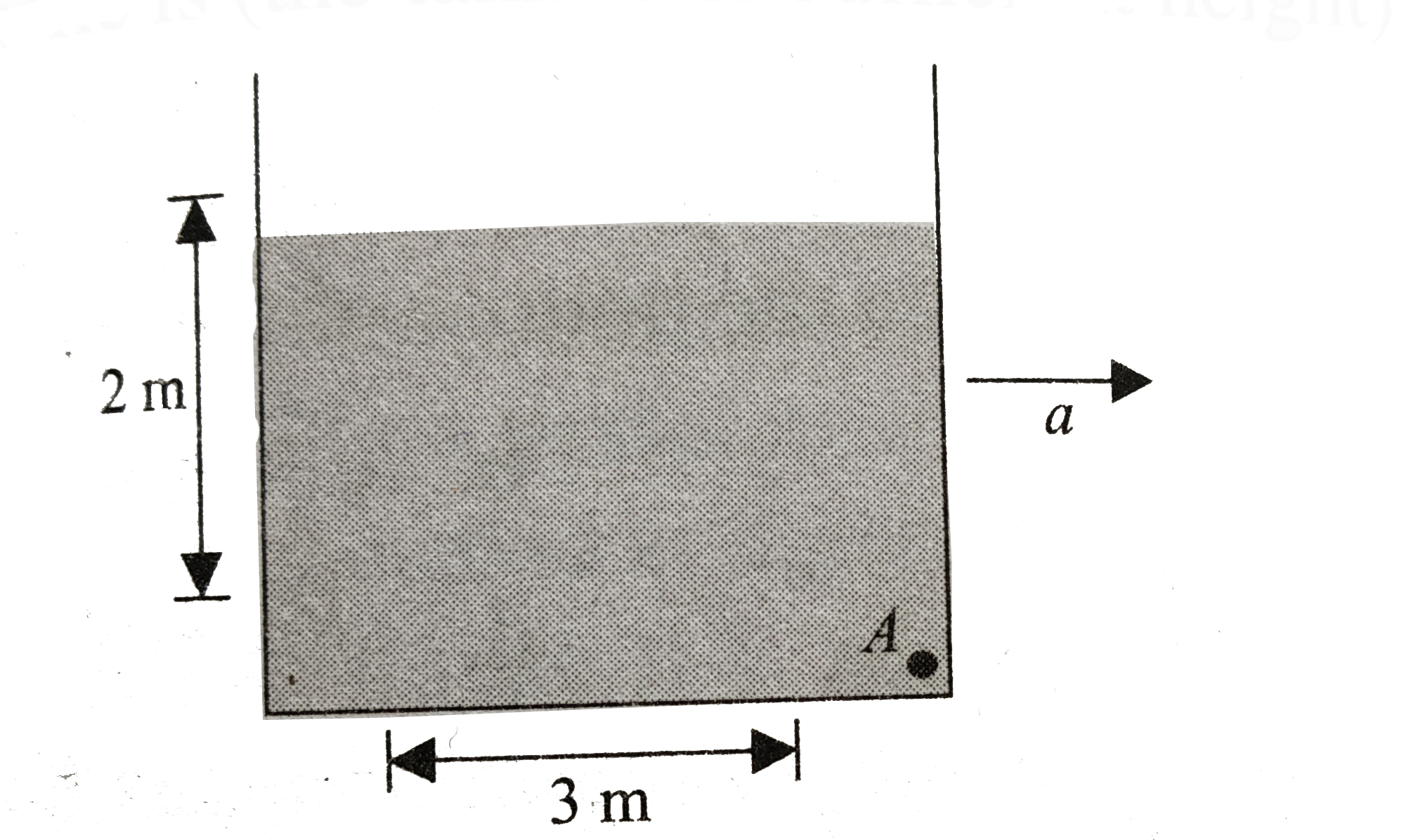Variation Of Pressure In An Accelerated Fluid
When a fluid is accelerated, its pressure distribution changes in response to the applied force, leading to intriguing variations that are crucial in both natural and engineered systems. Understanding these variations is essential in fields ranging from meteorology, where atmospheric pressure gradients drive weather patterns, to fluid mechanics in engineering, affecting the design of pipelines and pumps. For instance, in a car accelerating on a highway, the fuel inside the tank experiences a shift in pressure, influencing the flow towards the engine. Similarly, in your daily life, when you shake a bottle of soda, the liquid inside experiences pressure differences, leading to bubbles rising faster to the top. These examples illustrate how pressure variation in an accelerated fluid is a fundamental concept that governs various phenomena we encounter daily.
JEE Main/NEET 2027: Physics Important Formulas for Class 10
NEET 2025: Mock Test Series | Syllabus | High Scoring Topics | PYQs
JEE Main: Study Materials | High Scoring Topics | Preparation Guide
JEE Main: Syllabus | Sample Papers | Mock Tests | PYQs
- Variation of Pressure in an Accelerated Fluid
- Solved Examples Based on Variation of Pressure in an Accelerated Fluid
- Summary

Variation of Pressure in an Accelerated Fluid
When a fluid is subjected to acceleration, the pressure within it does not remain uniform but varies depending on the direction and magnitude of the acceleration. This variation is a critical aspect of fluid dynamics and has wide-ranging applications in both natural phenomena and engineering. For example, when an aeroplane ascends or descends, the pressure distribution inside the cabin changes, necessitating careful design to maintain passenger comfort and safety
Now we discuss cases one by one
Case I- When Acceleration in the Vertical Direction
When the liquid container is moving with constant acceleration in an upward direction
Consider a cylindrical element of height h and Area A as shown in the below figure.

The force on the top face of the element
The force on the bottom face of the element
If
We can write
Where
Where
So using this we get
When the liquid container is moving with constant acceleration in a downward direction
constant downward acceleration (a< g)
So

And Pressure at point A is given as
Constant downward acceleration (a=g)
The pressure became zero everywhere when a=g
Constant downward acceleration (a> g)
In this case, the fluid occupies the upper part of the container as shown in the figure.

Case II- When Acceleration in a Horizontal Direction
If a liquid in the tank is moving on a horizontal surface with some constant acceleration a
Then the free surface of the liquid takes the shape as shown by the dotted line in the figure.

Now consider a cylindrical element of length l and cross-section area A
Now consider a cylindrical element of length I and cross-section area A
So the force on the left face of the cylinder is
While force on the right face of the cylinder is
And we can also write
And the mass of the element of the liquid which is given by
Where
So using Newton's second law for the element
So we can say that
The free surface of the liquid makes an angle
Or the free surface of the liquid orient itself perpendicular to the direction of net effective gravity.
So for the below figure, we can say that

Pressure will vary in the horizontal direction.
The Pressure gradient in the x-direction is given as
Where the -ve sign indicates pressure increases in a direction opposite to the direction of acceleration.
Recommended Topic Video
Solved Examples Based on Variation of Pressure in an Accelerated Fluid
Example 1: A closed rectangular tank is completely filled with water and is accelerated horizontally with an acceleration towards the right. Pressure is

(i) maximum at, and (ii) minimum at
1) (i) B (ii) D
2) (i) C (ii) D
3) (i) B (ii) C
4) (i) B (ii) A
Solution:
Hence, pressure at B is maximum and pressure at D is minimum.
Hence, the answer is the option (1).
Example 2: A long cylindrical vessel is half-filled with a liquid. When the vessel is rotated about its own vertical axis, the liquid rises up near the wall. If the radius of the vessel is 5 cm and its rotational speed is 2 rotations per second, then the difference in the heights between the centre and the sides, in cm, will be :
1) 2
2) 0.4
3) 1.2
4) 0.1
Solution:
for this
Hence, the answer is the option (1).
Example 3: The minimum horizontal acceleration of the container so that the pressure at point A of the container becomes atmospheric (the tank is of sufficient height)

1)
2)
3)
4) None of the above
Solution:

Volume equality gives
Hence, the answer is the option (2).
Example 4: When a liquid is subjected to horizontal acceleration:
1)
2)
3)
4)
Solution:

Hence, the answer is the option (1).
Example 5: What will be the pressure at the bottom of a cylindrical vessel, when the vessel is under free fall?
1)
2) 0
3)
4)
Solution:
In free fall, the fluid is moving downward with acceleration equal to the free-fall
acceleration of the Earth. Thus, the acceleration of the fluid is
a = g
To obtain the pressure variation of the fluid at free-fall, substitute g for an in the equation
Hence, the answer is the option (2).
Summary
The variation of pressure in an accelerated fluid depends on the direction and magnitude of the acceleration. In vertical acceleration, the effective gravity changes, impacting the pressure distribution throughout the fluid. For horizontal acceleration, the fluid surface tilts, and pressure decreases along the direction of acceleration. These principles are essential for understanding fluid behaviour in various contexts, from moving vehicles to rotating containers, and are fundamental in designing systems where fluid dynamics play a critical role.
Also Read
26 Sep'24 10:56 AM
25 Sep'24 06:21 PM
25 Sep'24 06:20 PM
25 Sep'24 06:19 PM
25 Sep'24 06:18 PM
25 Sep'24 05:50 PM
25 Sep'24 05:50 PM
25 Sep'24 05:48 PM
25 Sep'24 05:48 PM
25 Sep'24 05:47 PM
